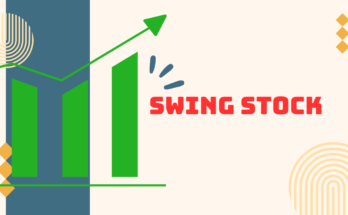Introduction:
If you want to know what the S&P 500 Index is and how to calculate the S&P 500 Index, then this article is for you.
What is The S&P 500 Index?
The S&P 500 Index is a stock market index that measures the performance of 500 large companies listed on stock exchanges in the United States. It is one of the most widely used benchmarks for measuring the performance of the U.S. stock market as a whole.
The index includes companies from a broad range of industries, including technology, healthcare, finance, and consumer goods.
What is The S&P 500 Index?: The S&P 500 Index is weighted by market capitalization, which means that larger companies have a greater impact on the index’s performance. The index is maintained by Standard & Poor’s, a division of S&P Global, and is updated regularly to reflect changes in the composition of the U.S. stock market.
Weighting Formula of the S&P 500:
The weighting formula of the S&P 500 is market capitalization-weighted , meaning that the index is calculated based on the total market value of all 500 companies included in the index. The formula used to calculate the S&P 500 index is:
S&P 500 Index = (Total Market Value of all 500 Companies) / (Index Divisor)
To calculate the market value of each company in the index, the formula used is:
Market Value of Company = (Price per Share) x (Number of Outstanding Shares)
Once the market value of each company in the index has been calculated, these values are added together to determine the total market value of all 500 companies in the index.
The weight of each company in the index is then calculated by dividing its market value by the total market value of all 500 companies. The resulting percentage represents the company’s weight in the index.
For example, if a company has a market value of $100 billion and the total market value of all 500 companies in the index is $25 trillion, the weight of the company in the index would be:
($100 billion / $25 trillion) x 100% = 0.4%
Therefore, the company would have a 0.4% weight in the S&P 500 index.
Calculation of the S&P 500:
The S&P 500 is calculated using a market capitalization-weighted index formula. The calculation involves three main steps:
1. Determine the market capitalization of each company: The market capitalization of a company is calculated by multiplying its share price by the number of shares outstanding.
2. Calculate the total market capitalization of all 500 companies: The total market capitalization is simply the sum of the market capitalizations of all the individual companies in the index.
3. Calculate the index level: The index level is calculated by dividing the total market capitalization of all 500 companies by a divisor. The divisor is a proprietary number used to maintain the continuity of the index over time.
The formula used to calculate the index level is:
Index Level = (Total Market Capitalization of all 500 Companies) / Divisor
The divisor is adjusted periodically to account for changes in the market capitalization of the companies in the index, such as stock splits or mergers and acquisitions.
The S&P 500 index is typically reported in points, which represent the index level divided by a predetermined base value. This base value is set at 10 for historical reasons, so the reported index level is 10 times the actual index level. For example, if the calculated index level is 3,000, the reported index level would be 30,000 points.
S&P 500 Index Construction:
The S&P 500 Index is constructed using a market capitalization-weighted methodology. This means that each company’s weight in the index is determined by its market capitalization, which is calculated by multiplying the company’s share price by its number of outstanding shares.
To be included in the S&P 500 Index, a company must meet the following criteria:
1. It must be based in the United States.
2. It must have a market capitalization of at least $8.2 billion.
3. It must have adequate liquidity, as measured by trading volume and number of shares outstanding.
4. It must be listed on either the NYSE, NASDAQ, or BATS exchange.
Once a company meets these criteria, it is added to the S&P 500 Index. The index is then rebalanced periodically to ensure that its composition remains representative of the U.S. stock market. This typically happens on a quarterly basis but may occur more frequently if necessary.
During the rebalancing process, the weightings of each company in the index may change based on their current market capitalizations. This can result in some companies being added or removed from the index, or in changes to their relative weights.
Other S&P Indices:
Yes, there are several other S&P indices in addition to the S&P 500. Here are some examples:
1. S&P 100: Also known as the “OEX,” this index tracks the performance of the top 100 companies in the S&P 500.
2. S&P 400 MidCap Index: This index tracks the performance of 400 mid-cap companies that fall between the largest and smallest companies in the S&P 500.
3. S&P 600 SmallCap Index: This index tracks the performance of 600 small-cap companies that fall outside the S&P 500.
4. S&P Global 1200 Index: This index tracks the performance of 1,200 large, mid, and small-cap companies from around the world, including both developed and emerging markets.
5. S&P GSCI Commodity Index: This index tracks the performance of a basket of commodities, including energy, agriculture, metals, and livestock.
6. S&P/BMV IPC: This index tracks the performance of 35 leading stocks on the Mexican Stock Exchange.
These are just a few examples of the many S&P indices that exist. Each index has its own methodology and set of criteria for inclusion, and investors can use them to track the performance of different segments of the market.
Limitations of the S&P 500 Index:
While the S&P 500 Index is widely considered to be a benchmark for the U.S. stock market and is used by many investors and fund managers to track market performance, it does have some limitations. Here are a few:
1. Limited universe of stocks: The S&P 500 Index only includes the 500 largest publicly traded companies in the United States. This means that it does not represent the entire U.S. stock market, and some smaller or mid-sized companies may not be included.
2. Market capitalization weighting: While the market capitalization weighting methodology used in the S&P 500 Index is commonly used in many indices, it can result in a concentration of holdings in a few large companies.
This means that changes in the stock prices of those companies can have a significant impact on the performance of the index as a whole.
3. Lack of diversification: Because the S&P 500 Index is composed of large-cap stocks from a limited universe of companies, it may not provide adequate diversification for investors who want exposure to a broader range of sectors or smaller companies.
4. Lack of global exposure: The S&P 500 Index is focused on U.S. companies, so it does not provide exposure to international markets or companies. This can limit its usefulness for investors who want to diversify their holdings across a broader range of geographies.
5. Not always representative of the economy: The performance of the S&P 500 Index may not always reflect the overall health of the U.S. economy, as it can be influenced by factors such as sector rotation or changes in the composition of the index.
Example of the S&P 500 Market Cap Weighting:
To understand how the underlying stocks affect the S&P index, the individual market weights must be calculated by dividing the market cap of each company by the total market cap of the index. One example of the S&P 500 Market Cap Weighting is as follows:
As of April 29th, 2023, the top five companies in the S&P 500 index and their respective market capitalizations are:
- Apple Inc. (AAPL) – $2.37 trillion
- Microsoft Corporation (MSFT) – $2.26 trillion
- Alphabet Inc. (GOOGL) – $1.93 trillion
- Meta Platforms, Inc. (META) – $1.32 trillion
- Amazon.com, Inc. (AMZN) – $1.23 trillion
To calculate the weight of each company in the index, we need to find the total market capitalization of all the companies in the index. As of April 29th, 2023, the total market capitalization of the S&P 500 is approximately $36.8 trillion.
Next, we can calculate the weight of each company in the index by dividing its market capitalization by the total market capitalization:
- Apple Inc. weight = $2.37 trillion / $36.8 trillion = 6.44%
- Microsoft Corporation weight = $2.26 trillion / $36.8 trillion = 6.14%
- Alphabet Inc. weight = $1.93 trillion / $36.8 trillion = 5.24%
- Meta Platforms, Inc. weight = $1.32 trillion / $36.8 trillion = 3.58%
- Amazon.com, Inc. weight = $1.23 trillion / $36.8 trillion = 3.34%
So, as of April 29th, 2023, Apple Inc. has the largest weight in the index at 6.44%, followed by Microsoft Corporation at 6.14%, Alphabet Inc. at 5.24%, Meta Platforms, Inc. at 3.58%, and Amazon.com, Inc. at 3.34%.
S&P 500 Competitors:
There are several other stock market indices that can be considered competitors to the S&P 500 Index. Some of the most notable ones include:
1. Dow Jones Industrial Average (DJIA): The DJIA is another popular stock market index that tracks the performance of 30 large-cap stocks in the United States. Unlike the S&P 500, the DJIA is a price-weighted index, which means that the stock with the highest price per share has the largest weight in the index.
2. Nasdaq Composite Index: The Nasdaq Composite Index is a market capitalization-weighted index that tracks the performance of more than 3,000 stocks listed on the Nasdaq stock exchange. It is often used as a benchmark for technology and growth stocks.
3. Russell 2000 Index: The Russell 2000 Index is a market capitalization-weighted index that tracks the performance of 2,000 small-cap stocks in the United States. It is often used as a benchmark for small-cap stocks and can provide more diversified exposure to the U.S. stock market than the S&P 500.
4. MSCI World Index: The MSCI World Index is a market capitalization-weighted index that tracks the performance of large- and mid-cap stocks from 23 developed countries around the world. It provides broader exposure to international markets than the S&P 500.
5. FTSE All-World Index: The FTSE All-World Index is a market capitalization-weighted index that tracks the performance of large-, mid-, and small-cap stocks from developed and emerging markets around the world. It also provides broader exposure to international markets than the S&P 500.
Disclaimer: The financial and investment market information provided on Blogbia is intended for informational purposes only and should not be construed as investment advice. It is highly recommended that you conduct your own research and seek guidance from financial experts before making any investment decisions. The decision to continue reading the content on this website is entirely at your discretion, and it shall be understood as an express acknowledgment and agreement that Blogbia shall be released from any potential legal action or enforceable claims that may arise.




Thanks for another wonderful article. Where else
could anybody get that type of information in such an ideal manner of writing?
I have a presentation next week, and I’m on the look for such
information.
Thank you so much for your appreciation.
I love your blog.. very nice colors & theme. Did you design this website yourself or did you hire someone to do it for you? Plz reply as I’m looking to design my own blog and would like to find out where u got this from. kudos
My website was designed and created by me. If you want, I can design your website as per your choice.
I created three websites of my own.
Thanks so much for giving everyone such a remarkable opportunity to read critical reviews from here. It is always so nice plus jam-packed with a lot of fun for me and my office colleagues to visit your web site really three times in a week to find out the newest stuff you will have. Of course, I’m so at all times astounded with your surprising strategies served by you. Certain two points on this page are ultimately the finest I have ever had.
Your heartfelt words truly made my day! I’m delighted to hear that you and your office colleagues enjoy the content on my website. It’s always a pleasure to share and connect with such a fantastic audience. I appreciate your recognition of the strategies presented, and I’m thrilled that you consider certain points here to be the finest you’ve ever encountered. Your support means a great deal, and I’m looking forward to continuing to provide valuable and enjoyable content for you and your colleagues. Thank you for being part of this community!”
Valuable info. Fortunate me I found your website by chance, and I’m shocked why
this coincidence didn’t took place in advance! I bookmarked it.
I used to be suggested this website by means of my cousin. I am not certain whether this submit is written by way of him as
no one else know such specific approximately my trouble. You’re wonderful!
Thanks!